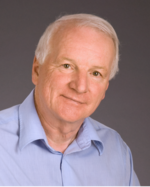Professor, UBC Depts. Radiology and Physics&Astronomy
Director, UBC Magnetic Resonance Imaging Research Centre
Nuclear magnetic resonance is a powerful technique for investigation of structure and dynamics on an incredibly broad distance scale from the atomic to the macroscopic level. Magnetic resonance imaging (MRI), which has become an important diagnostic technique in medicine, provides excellent soft tissue contrast between different normal tissues and between normal and pathological tissues. Before the full potential of MRI and MRS in medicine can be realized, fundamental research is required to understand the physics behind the NMR signal from tissue. Recently, we have been modeling the microscopic structure of tissue in order to better understand what determines its magnetic resonance signal behaviour. Our research has focused on the development of quantitative interpretations of biomedical NMR results in terms of structure, dynamics and composition at the molecular and cellular levels.
We have spent considerable effort studying how to learn about local environments in biological tissue from the water NMR signal. In human brain, we identified a reservoir of water compartmentalized in the myelin component of white matter. Myelin is the insulation of nerve cells and when it is absent nerve signals propagate at a very much slower rate. Our measurements of myelin are providing new fundamental insights into the role of myelin in both normal and abnormal brain. We have worked extensively on myelin degeneration in neurological diseases such as multiple sclerosis, schizophrenia, and phenylketonurea. Our techniques are currently being applied in clinical trials of drugs designed to promote regrowth of myelin in multiple sclerosis brain.
We have excellent access to magnetic resonance imaging at the UBC MRI Research Centre.
C Laule and AL MacKay, Magnetic Resonance of Myelin Water: An in vivo marker for Myelin, Brain Plasticity 2, 71-91 (2016)
SM Meyers, SH Kolind, C Laule, AL MacKay, Simultaneous measurement of total water content and myelin water fraction in brain using a T2 relaxation based method, Magmetic resoannce imaging 37, 187-194 (2017)
R. Barta, S. Kalantara, C. Laule, IM Vavasour, AL MacKay, C Michal, Modelling T1 and T2 relaxation in boving white matter, Journal of Magnetic Resonance 259, 56-67 (2015)
AL MacKay, IM Vavasour, A Rauscher, SH Kolind, B Madler, GRW Moore, AL Traboulsee, DKB Li, C Laule, MR Relaxation in Multiple Sclerosis, Chapter 1 of NEUROIMAGING CLINICS: Multiple Sclerosis, VOL 2, Non-conventional MR techniques, edited by Massimo Filippi. (2008)
